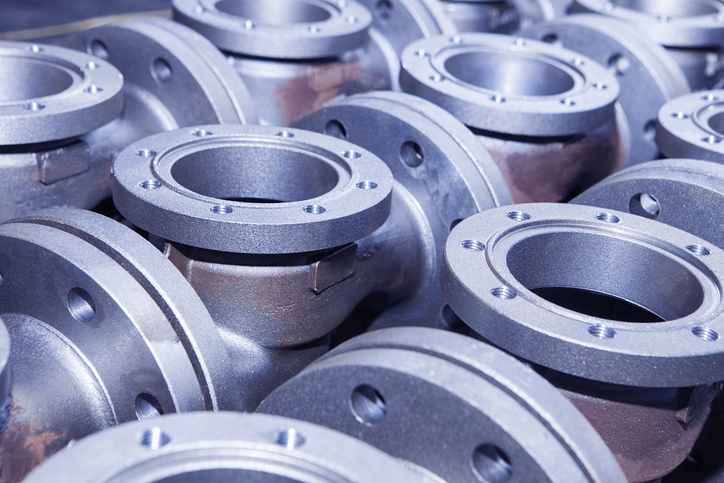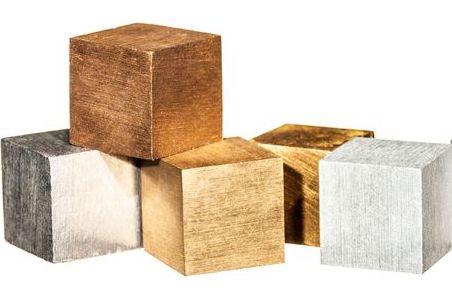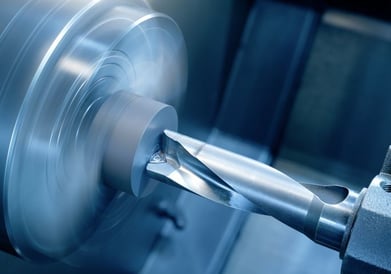
Valve Manufacturing 101: An In-Depth Guide
Valves are essential components in a wide variety of mechanical systems, controlling the flow of liquids and gases in countless applications. From the plumbing and HVAC in residential homes to the complex piping systems in large industrial and municipal infrastructure, valves play a critical role in regulating and managing fluid dynamics.
Here, we provide a comprehensive guide to valve manufacturing, covering the basics of valve types, materials, manufacturing processes, and their applications in different industries.
The Valve Manufacturing Process
The valve manufacturing process involves several key stages, each requiring precision and expertise. Let’s have a closer look at these stages to understand the comprehensive nature of valve manufacturing:
Stage 1: Initial Design & Prototyping
In the initial design and prototyping stage of valve manufacturing, one of the most crucial decisions is selecting the right materials based on the valve's desired end-use. This decision is pivotal because the material directly influences the valve's performance, durability, and suitability for specific environments and applications.
Understanding the Application
The first step in the design process is a thorough understanding of the valve's intended application. This involves considering factors such as:
- Type of Fluid: The nature of the fluid (gas, liquid, corrosive, abrasive, etc.) that the valve will control.
- Temperature and Pressure Conditions: The operational temperature and pressure range(s) the valve will be exposed to.
- Environmental Conditions: External factors like exposure to corrosive environments, underwater applications, or extreme temperatures.
Material Selection for Desired Performance
Once the application parameters are clearly defined, engineers select materials that can meet these specific requirements. For instance:
instance:
- High-Temperature and High-Pressure Applications: Materials like stainless steel or high-grade alloys are chosen for their strength and ability to withstand extreme conditions.
- Corrosive Environments: Materials such as bronze, brass, or specialized plastics are selected for their corrosion resistance.
- Food and Beverage or Medical Applications: Materials must be non-toxic and often require specific certifications like FDA approval. Stainless steel is a common choice due to its non-reactive nature.
Prototyping for Validation
With the materials selected, the next step is to create prototypes. These prototypes are critical for validating the design and material choices. They are tested under conditions that mimic real-world applications to ensure that the valve performs as expected and can withstand the demands of its intended use. This stage might involve simulations and stress testing to identify any potential weaknesses or areas for improvement.
Iterative Design Process
The design and prototyping phase is often iterative. Based on testing results, adjustments in the design or material choice might be necessary to fine-tune the valve's performance. This iterative process ensures that the final product is not only functionally efficient but also cost-effective and durable.
Stage 2: Material Procurement & Inspection
Once the design is finalized, the next step is procuring the chosen materials, typically in the form of bar-stock, or raw forging or casting. Upon arrival, these materials undergo rigorous inspection to ensure they meet quality standards and specifications.
Stage 3: Precision Machining & Component Fabrication
With materials in hand, the manufacturing process moves to machining and fabrication. This stage involves machining the raw materials into valve components using various removal operations, including turning, drilling, and milling. Precision is key here, as the components must fit together seamlessly to ensure the valve's proper function and longevity. Advanced machining equipment, such as CNC (Computer Numerical Control) lathes & mills, and cylindrical grinders are often employed for their high precision and efficiency.
Stage 4: Finishing & Coating
After the individual components of the valve are machined and finished their required tolerances some components may require a specialized surface treatment or coating. This step is crucial for enhancing the valve's corrosion resistance, surface strength, and overall durability. Various coatings, such as epoxy, zinc, or nickel plating, can be applied depending on the valve's application and the required level of protection.
Stage 5: Assembly & Integration
Following machining, the individual components are assembled to form the complete valve. This process requires skilled technicians and specialized automation to meticulously put together parts such as the body, disc, seat, stem, and actuators. The assembly process might also involve welding and fitting additional accessories or controls, depending on the valve's complexity and application.
Stage 6: Rigorous Testing and Quality Assurance
After assembly, valves undergo a series of tests to ensure they function correctly and safely. These tests might include pressure tests, leak tests, and operational tests to simulate real-world conditions. Quality assurance is paramount in this stage, as any defects or malfunctions could potentially lead to severe consequences in the valve's end-use environment.
Step 7: Packaging & Distribution
Once the valves have passed all quality checks and received their finishing touches, they are packaged and prepared for distribution. Proper packaging is essential to protect the valves during transportation, ensuring they reach the customer in perfect condition, ready for installation and use.
Valves: Applications Across Industries
Valves, as critical components in controlling and managing the flow of fluids, find their applications in a wide array of industries. Each industry presents unique challenges and requirements, which are met through specialized valve designs and materials. Let's take a closer look at some key industries and how they utilize valves:
Oil & Gas Industry
In the oil and gas sector, valves are used for a variety of critical functions, including drilling, extraction; refining; bulk transfer, transportation, storage, and distribution. High-pressure valves are essential for controlling the flow of oil and natural gas, often under extreme conditions. Materials like stainless steel and high-grade alloys are preferred for their strength and corrosion resistance. Safety is a paramount concern in this industry, making reliable valve performance crucial.
Water & Wastewater Treatment
Valves play a vital role in water treatment plants and wastewater management systems. They are used for regulating water flow, controlling treatment processes, and managing waste disposal. Durability and resistance to corrosion are important factors in material selection, with materials like brass and plastic often being used. The ability to operate efficiently over long periods with minimal maintenance is a key requirement in this sector.
Chemical Processing Industry
The chemical processing industry relies on valves to handle a variety of chemicals, some of which can be highly corrosive or toxic. Specialty valves designed to withstand these harsh conditions are essential. Materials like Teflon or PVC might be used for their chemical resistance. Valves in this industry often require precise control mechanisms to manage the flow rates and prevent leaks.
Power Generation
In power plants, valves are used to control the flow of steam and water. This includes applications in traditional coal-fired plants, nuclear power plants, and renewable energy sources like hydroelectric power. The valves in these settings need to withstand high temperatures and pressures, making material selection critical for ensuring longevity and safety.
Food & Beverage Industry
The food and beverage industry requires sanitary valves that meet strict hygiene standards. These valves are used in the processing, packaging, and transportation of food and beverage products. Stainless steel is a common material choice due to its non-reactive nature and ease of cleaning. The valves must also be designed to prevent contamination and ensure the integrity of the products.
Aerospace & Aviation.jpg?width=382&height=254&name=iStock-1316894945%20(2).jpg)
In aerospace and aviation, valves are used in fuel systems, hydraulic systems, and environmental control systems. They must be lightweight yet capable of withstanding high pressures and extreme temperatures. Reliability is critical in this industry, as valve failure can have serious consequences.
Consumer Appliances
Valves are also found in many consumer appliances, such as washing machines, dishwashers, and refrigerators. These valves control water flow, temperature, and pressure. The focus in this industry is on cost-effectiveness, reliability, and user safety.
Residential & Industrial Plumbing & HVAC (Heating, Ventilation, and Cooling)
Valves are also found in all water supply and mechanical HVAC systems. These valves control water, gas, and refrigerant flow & pressure as well as water & air temperature. The focus of these applications is on reliability, safety, and serviceability.
The Pivotal Role of Valve Manufacturing
In summary, valve manufacturing is a critical and intricate process that plays a vital role in the functionality and efficiency of systems across a broad spectrum of industries. From the initial design and prototyping stage, where material selection is tailored to meet specific end-use requirements, to the final stages of assembly, testing, and distribution, each step in the valve manufacturing process is executed with precision and care.

